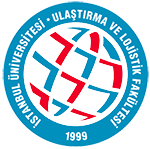
Ulaştırma ve Lojistik Kongreleri
- Türkçe
- Özet
- 2021
Bartın’ın Ulaştırma ve Lojistik GZFT Analizi
Yaşar Akça
Doç. Dr., Bartın Üniversitesi, Bartın, Türkiye
Aslı Çillioğlu Karademir
Dr. Öğr. Üyesi, Bartın Üniversitesi, Bartın, Türkiye
Anahtar Kelimeler: Bartın Ulaştırma ve Lojistik, Filyos Limanı, Bartın Demiryolu, Saltukova Havaalanı, GZFT Analizi
Transportation and Logistics SWOT Analysis of Bartın
When transportation is mentioned, it is expressed that people or goods are taken from certain points and transported to certain points. Thus, production and consumption centers are united. In addition, transportation activities especially affect the choice of place of establishment of companies. The concept of logistics implies the planning, implementation and control of the two-way movement of raw materials from the starting point to the endpoint where the product is consumed. This study aims to discuss the current state of transportation and logistics facilities of Bartın province. With the determinations and assessments, the strengths, weaknesses, threats and opportunities that Bartın has in the transportation and logistics sectors are presented together. The recommendations that need to be made are indicated in the results section. Bartın is located in the Western Black Sea region and has borders with Zonguldak, Karabük and Kastamonu. It is a province since 1991. The altitude of the city center from the sea is 25 meters and the length of the Black Sea coast is 59 kilometers. It has a surface area of 2143 km2. Fifty-eight percent of the soils are made up of forests, 28% is agriculture and 14% is settlement area. It shows the temperate climate property. The summer season is hot and the winter season is cool. The central organized industrial site of Bartın is 174 hectares and the occupancy rate is 100%. It mainly houses factories operating in the clothing, rubber-plastic products, and furniture sectors. The export quantity of Bartın province in 2019 was 29 million dollars and the import quantity was 7 million dollars. Bartın has road transport close to industrial and commercial centers that have an important place in the country's economy, such as Ankara, Istanbul, Sakarya and Kocaeli. The two ports owned by the province address mainly the iron and steel and mining sectors. The city's transportation infrastructure is poor. Integrated logistics services are not developed. Existing depots and warehouses and articulated lorry/truck parks are at an inadequate level. The most commonly used form of transport is road transport. The Black Sea coastal road project will pass in the direction of Bartın-Filyos-Zonguldak-Ereğli and reach the third Bosphorus Bridge. Bartın has no rail transport. But the Zonguldak-Ankara railway line passes through Saltukova, 38 km from Bartın. Feasibility studies of the Saltukova-Bartın railway are being executed by the General Directorate of State Port Services. Saltukova Airport, 36 km from Bartın, supplies Bartın's national and international air travel requirements. The flights continue to Germany on international lines and Istanbul and Trabzon on domestic lines. Since the port of Bartın has an ISPS code representing ship and port security, it has been open to international maritime traffic since 1995. For cargo and passenger transport, Bartın port is a customs gate serving international standards. The port's annual cargo capacity is two million tons. In this study, Bartın's strengths and weaknesses in transportation and logistics activities, as well as opportunities and threats, were identified through SWOT analysis. Thus, solutions to the problems were put forward. When Bartın's transportation networks are considered, its highway, airline and sea transportation facilities are seen to be sufficient. It is closest to Filyos valley, a major project. With all these advantages, Bartın promises a bright future in itself from a logistical point of view. On the other hand, it is necessary to develop the existing transport networks of the province and ensure a double road connection with Karabük. Thus, Bartın will become a preferred city in terms of transportation and logistics. To make sufficient use of the existing port facilities, it is necessary to implement the ring road and railway project between Bartın Organize Industry Zone and Bartın port as soon as possible. It is essential to quickly establish a rail transport system between the Bartın center and the Kutlubey campus of Bartın University. The railway project connected with the surrounding provinces should be put into operation quickly. The Black Sea coastal road must be finished off quickly from start to finish. It should be switched to a transport network system where all transport modes are integrated. As a result, Bartın will have good position in future in terms of logistics and transportation if the existing problems are solved and the proposals are implemented.Keywords: SWOT Analysis, Bartın Transportation and Logistics, Filyos Seaport, Bartın Railway, Saltukova Airport


Bu çalışma, kullanan kişilere orjinal çalışmadan alıntı yaptıkları sürece, çalışmayı dağıtma, değiştirme ve üzerine çalışma hakkı tanıyan Attribution 4.0 International (CC BY 4.0) lisansı ile lisanslanmıştır.
İletişim
İstanbul Üniversitesi Ulaştırma ve Lojistik Fakültesi
İ.Ü. Avcılar Kampüsü 34320 Avcılar/İstanbul
ulk@istanbul.edu.tr
+ 90 (212) 440 00 00 - 19200


